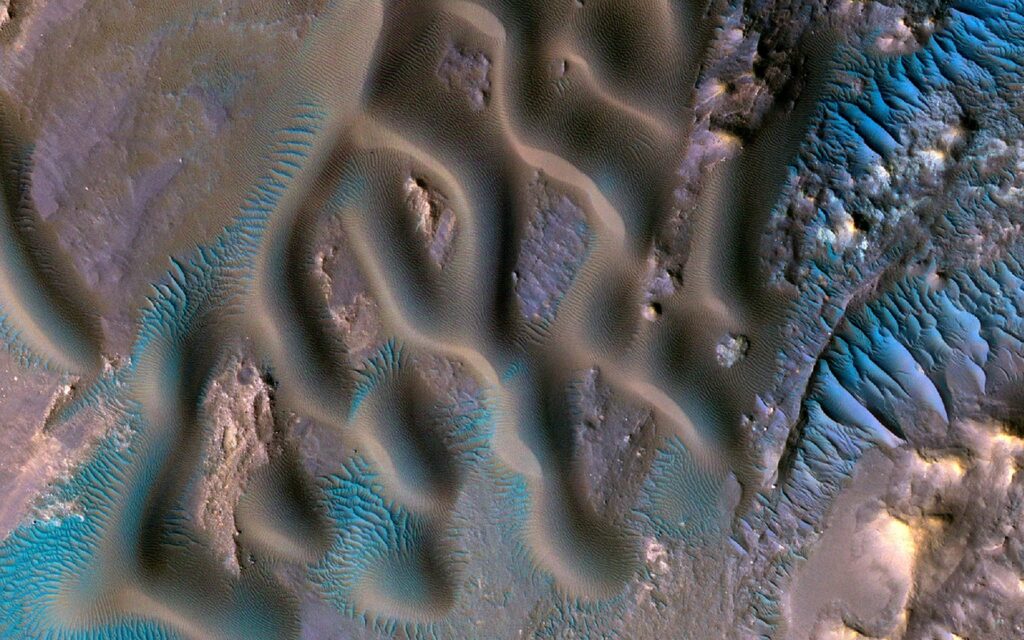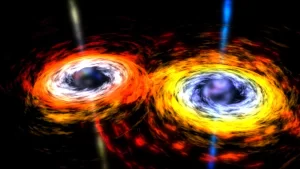Transverse Aeolian Ridges: Blue Ripples on a Red Planet

Transverse Aeolian Ridges: Blue Ripples on a Red Planet
Mars can be the Red Planet, however false-shadeation photos like this you’ll be able to assist us study its climate and geology. This High Resolution Imaging Science Experiment (HiRISE) photo suggests lots of wind-associated functions on Mars close to the middle of Gamboa Crater, an effect crater that lies on the transition from Chryse Planitia to Acidalia Planitia. Larger sand dunes shape sinuous crests and person domes.
There are tiny ripples at the tops of the dunes which can be simplest numerous toes from crest to crest. These merge into large mega-ripples which can be approximately 30 toes aside and radiate outward from the dunes. The large, brighter formations which can be more or less parallel are acknowledged as “Transverse Aeolian Ridges” (TAR). These TAR are included with very coarse sand.
The mega-ripples seem blue-inexperienced on one aspect of an superior shadeation cutout whilst the TAR seem brighter blue at the other. This can be due to the fact the TAR are actively shifting below the pressure of the wind, clearing away darker dirt and making them brighter. All of those unique functions can suggest which manner the wind changed into blowing after they formed. Being capable of observe such range so near collectively permits us to look their relationships and examine and comparison functions to take a look at what they’re fabricated from and the way they formed.
![Hubble Finds “Missing Link” Black Hole Tearing Apart a Star That Passed Too Close [Video]](https://aspiredworlds.com/wp-content/uploads/2022/07/Mid-Sized-Black-Hole-Eating-Star-scaled-1-300x169.jpg)






